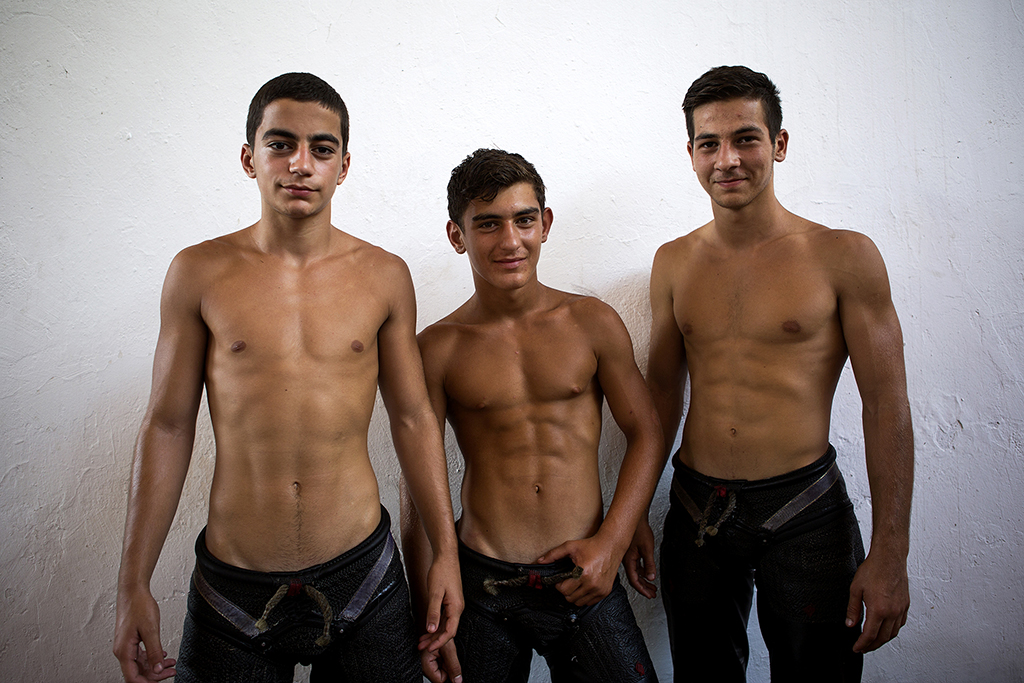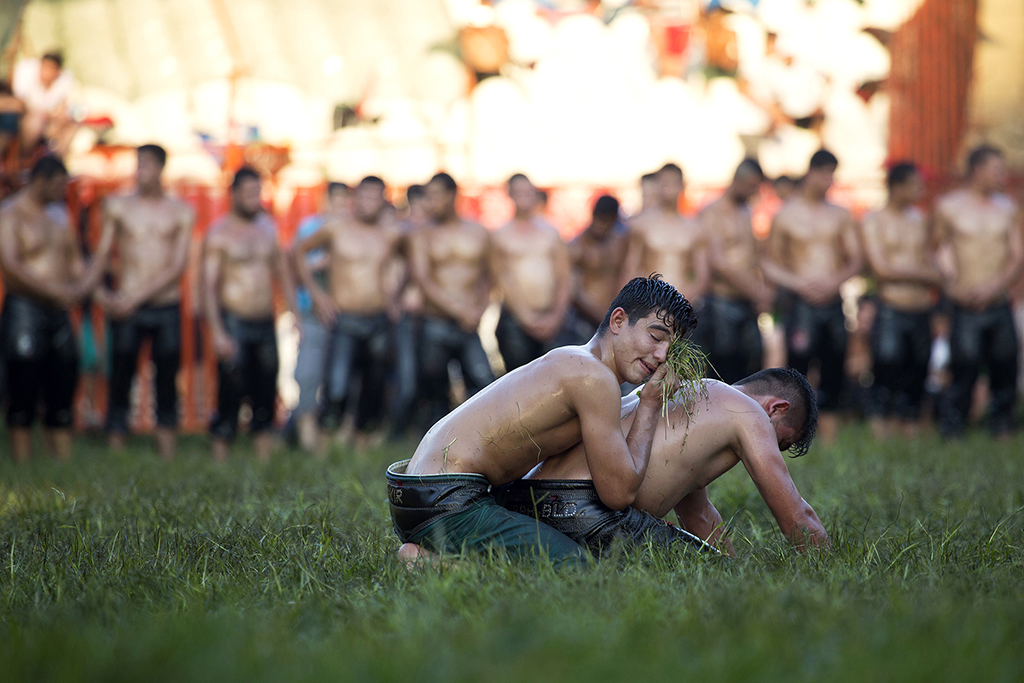Oily
Turkey's endurance wrestlers

Turkish photographer Sedef Özge on undressed bodies and the language of masculinity.
I have never felt as alienated to a man’s body as in the oil wrestling arena. It is not only the oil covering the body and making it shine like an artifact, or the leather tights that resemble organic parts of the body; it is also the way in which oil becomes a symbol of masculinity, taking on all of its codifications of power. It is how the wrestlers use their own body weight to crush the other men, and how they grab their intimate parts in order to humiliate their contestants, making themselves “more of a man.” It is being in an arena where men challenge all other men in order to prove their own manhood, and reclaim their potency.
I have never felt as alienated to man’s body as in the oil wrestling arena.
They roar, they throw themselves upon their rivals. They slap, they tease, they spit. They are heavy, fierce. Slippery and, as such, unapproachable.
Then there are the boys. Boys of ages 11 to 17, in categories like “apprentice”, “small” or “small medium”, who learn to wrestle and appropriate codes of masculinity. A rite of passage, where they learn how to behave in defeat or victory, how to treat their competitors and teammates, how to hold back their tears and let out their anger, and how to speak the male body language – spitting, wiping the sweat and oil from their faces, posing for photographers (body slightly turned, muscles showing but in seemingly natural poses, emotions controlled).
After the game, when the oil has been washed off from their bodies, the wrestlers turn into their own personal selves again. Some are macho misogynists; others friendly, open and considerate. In any regard, they are never as static as their anonymous, oily selves. While positively – actually, overly – camera-conscious in the wrestling arena, they turn shy towards the camera the moment their oily selves have been rinsed off. It seems that oil, as fluid as the slippery liquid may be, solidifies and seals a strong layer of masculinity on top of each man’s own body.
It seems that oil, as fluid as the slippery liquid may be, solidifies and seals a strong layer of masculinity on top of each man’s own body.
When working on this series, I have had women ask how I can stand this mixture of oil and testosterone, and why I find it interesting. I do – I find it amazing actually, to see how in this man’s world, totally closed off to women (while there are often women, mostly relatives, in the audience, female photographers are not allowed inside the wrestling arena, and only those working for the press are allowed in the wrestlers’ stand), codes of masculinity are exercised and reconstructed, with oil becoming like a cloth covering every detail of the wrestlers’ personalities and individual preferences, turning them into nameless warriors of manhood.
Men have asked me why I shoot “a man’s subject” or why I “still” shoot oil-wrestlers even though they have already been “perfectly shot” by male photographers many times before. Indeed, they have, just like other photographers have shot many things perfectly before. There are literally tens of photographers in these wrestling arenas already (especially at Kirkpinar, the biggest among some forty oil wrestling events): national and international press photographers, sports photographers, documentary photographers and club photographers. This makes me wonder, what makes a topic “suitable” for women to shoot? And when does it become male property?
What makes a topic “suitable” for women to shoot? And when does it become male property?
I think all of this implies that women should not shoot things like: all-male subjects, high levels of male nakedness, acts focused on male genital organs, places where there is a high risk of being harassed or harmed, and settings where men have been dominant all throughout the history of photography (essentially: conflict and sports). Even though my eyes have been inevitably and repeatedly trained by looking at images produced by men, should that keep me from trying to understand the male world and its codes through photography? And, since oil-wrestling is as alienating for many men as it is for me, can I generalise what happens in the arena, thinking of it as codes of masculinity? Does photography allow me to say something about it, more than portraying it as a sports event as such? The simplest response to all of this is that I shoot basically because I have questions, and I want to use my camera to understand the world (in this case, a man’s world).





















